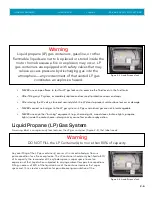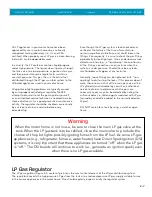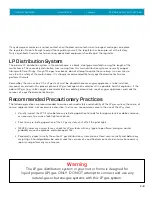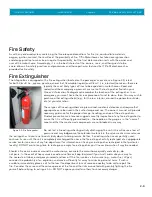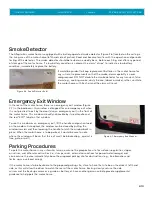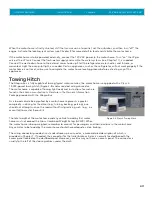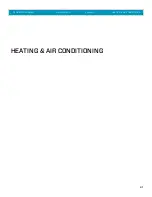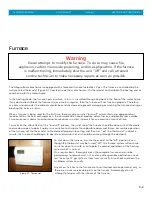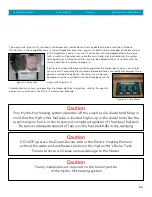
TIFFIN MOTORHOMES
–ALLEGRO BUS®
Chapter 1
GENERAL INFORMATION
Weighing Procedures for the Allegro Bus
To weigh the motor home properly, the motor home should be level when the weighing process is performed.
Your Allegro Bus motor home has been designed and built in compliance with the recommended limits of the
major-component/system suppliers to provide a realistic CCC. However, it is up to the final user to provide
even distribution of the loads brought into the motor home to prevent uneven loading. Once the motor home
is loaded, it can be taken to any drive-on scales or individual-wheel scales to determine that the final weight is
within specified limits for the motor home. The procedure which can be used is as follows:
First, drive the motor home onto the scales so that all wheels are on the scales; this provides the gross vehicle
weight (GVW) of the motor home and can be recorded as such. The GVW should not exceed the GVWR
specified for the motor home. Second, drive the motor home so that the front wheels are off the scales and
only the rear wheels remain on the scales; this provides the total weight of the motor home, save for the front
axle. This weight should not exceed the total rating of the axles remaining on the scales. The front axle weight
is determined by subtracting the weight from the GVW that was obtained in the first step which was performed
earlier. The result should not exceed the listed front-axle weight rating. For a more thorough weighing of the
motor home, Chapter 14 contains more specific axle-weight determinations.
Weight Distribution throughout the Motor Home
To assure the maximum stability of the motor home under static (i.e., parked) and dynamic (i.e., moving)
conditions, the distribution of the items to be carried and stored within the motor home and in the storage bays
underneath the motor home should be performed in such a manner to strive for reasonably even side-to-side
and front-to-rear dispersion of the entire weight of both the stored items and also the driver and expected
passenger(s) during transit. This process will assure that the motor home is not “lop-sided” in weight
distribution (i.e., all the stored weight on one side and/or mainly towards the front or the rear)—keeping a
center of mass of the motor home essentially centered on a front-to-rear and side-to-side basis will also provide
better control of the motor home when it is in motion.
1-7
Summary of Contents for 2014 Allegro Bus
Page 6: ... TIFFIN MOTORHOMES ALLEGRO BUS Chapter 1 GENERAL INFORMATION GENERAL INFORMATION 1 1 ...
Page 51: ... TIFFIN MOTORHOMES ALLEGRO BUS Chapter 5 CABINETS FURNITURE CABINETS FURNITURE 5 1 ...
Page 55: ... TIFFIN MOTORHOMES ALLEGRO BUS Chapter 6 STRUCTURAL FEATURES STRUCTURAL FEATURES 6 1 ...
Page 57: ... TIFFIN MOTORHOMES ALLEGRO BUS Chapter 7 ELECTRICAL FEATURES ELECTRICAL FEATURES 7 1 ...
Page 72: ... TIFFIN MOTORHOMES ALLEGRO BUS Chapter 8 SLIDE OUT FEATURES SLIDE OUT FEATURES 8 1 ...
Page 76: ... TIFFIN MOTORHOMES ALLEGRO BUS Chapter 9 EXTERIOR FEATURES EXTERIOR FEATURES 9 1 ...
Page 83: ... TIFFIN MOTORHOMES ALLEGRO BUS Chapter 10 INTERIOR FEATURES INTERIOR FEATURES 10 1 ...
Page 87: ... TIFFIN MOTORHOMES ALLEGRO BUS Chapter 11 PLUMBING BATH FIXTURES PLUMBING BATH FIXTURES 11 1 ...
Page 105: ... TIFFIN MOTORHOMES ALLEGRO BUS Chapter 13 ROUTINE MAINTENANCE ROUTINE MAINTENANCE 13 1 ...


















